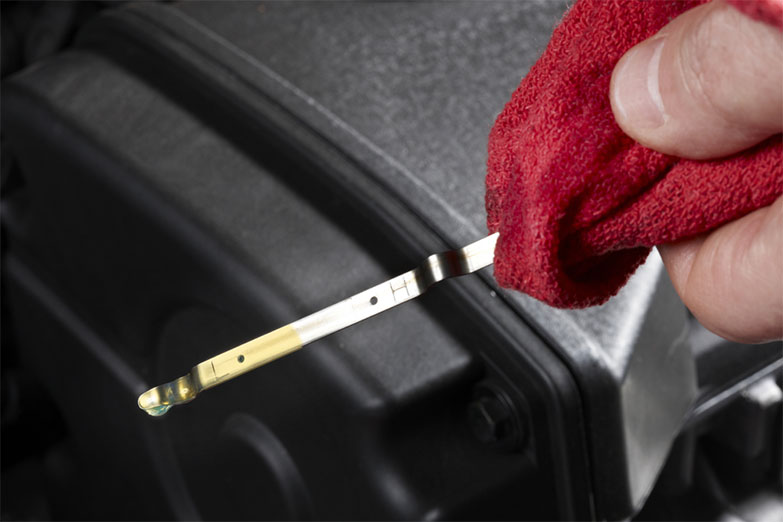Your Vehicle’s Lifeline: Fluids that Matter
It may seem like a peculiar comparison, but you and your vehicle have a few things in common. Just like your body need fluids to survive, your vehicle too cannot do without them. Fluids are its lifeline! Furthermore, you require routine check-ups, preventive care and timely treatments to live a long and healthy life. Your vehicle too needs regular servicing and repairs to optimize its performance and lifespan.

Regularly checking your vehicle’s fluid levels is one of the easiest ways to make your ride safe and efficient. Read up our list on fluids that need to be monitored once a month, and add this task to your DIY and auto maintenance checklist.
Essential Fluids in Your Vehicle
- Engine Oil: One of the most crucial fluids, engine oil protects the engine’s internal components from corrosion and keeps them cool while in use. Depending on the vehicle’s make, manufacturers recommend an engine oil change after every 8,000 kilometres or 12,000 kilometres. To check the engine oil level, use the dipstick that is typically located at the front of the engine. Once you pull it out, wipe it clean, reinsert it and pull it out again. Check the markings on the dipstick and make sure your engine oil level is between the full and low mark. If the level is lower or the oil looks dirty, follow the recommendations mentioned in the owner’s manual to top up or change the oil.
- Coolant: Coolant, or antifreeze maintains the radiator temperature and prevents it from freezing or overheating. The coolant tank is the clear, overflow plastic container near the radiator. Check the liquid level based on the markings provided outside the tank. If you need to add more coolant, check whether it is premixed or if it needs a 50-50 mix of coolant and water.
- Windshield Wiper Fluid: The windshield wiper keeps your windshield clean while driving. It is especially useful when you are struggling with low visibility due to the sun’s glare, fog, a light drizzle, or snow. Typically, the windshield wiper reservoir is at the back of the engine, near the windshield. Based on your vehicle’s make and model, the location could differ. Since it is usually translucent, you can see the fluid level and decide if it needs a simple top up.
- Power Steering Fluid: Power steering fluid pressurises the power steering pump and is an essential element in the functioning of the steering. Check for a reservoir that reads “steering” or “power steering” on top of the cap. Most reservoirs have a dipstick that you can remove to check the fluid level markings. In some vehicles, you need to remove the reservoir cap and check if it needs a refill.
- Transmission Fluid: Transmission fluid is the most critical element in the automatic transmission system of any vehicle. Most new vehicles come without a transmission dipstick, hence you will need to go to an auto repair centre to check the fluid level and condition. If your vehicle has a transmission dipstick at the front or back of the engine, then do the same checks as you would for the engine oil.
Prefer to Leave Fluid Checks in the Hands of Professionals? Great Idea! Bring Your Vehicle to Minit-Tune & Brake Auto Centres
Add thousands of kilometres to the life of your vehicle. Schedule an oil change and maintenance service at one of our 18 locations across BC and Alberta. Apart from oil changes and fluid checks, our experienced and trained mechanics will conduct a thorough multi-point visual inspection and fulfill all your car care needs.
For comprehensive auto repair in Vancouver and its surrounding cities, or to learn more about car maintenance, contact one of our centres in your area.
MINIT-TUNE BLOG
Minit-Tune & Brake Auto Centres Address Common Issues
Here at Minit-Tune & Brake Auto Centres in British Columbia, we’re always pleased to help our customers get the most out of their cars and trucks. To that end, we’ll add a relevant blog topic from time to time to keep you up to date and getting the most out of your vehicle.
